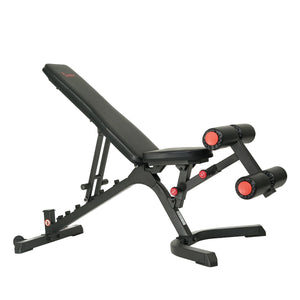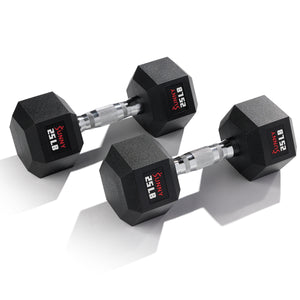Admit it. You’ve heard things.
“It’s all downhill after you turn 40.”
“The day I turned 40, everything changed.”
“If I have one regret in my life, it’s turning 40.”
The hype around building muscle over 40—and how hard it is—has never been greater. But if you really look at who’s saying these things, you might see a common denominator.
Advertisements. Sponsored podcasts. Blog posts. In short: marketers.
In this article, we’re going to separate some of the truth from fiction about building muscle over 40. You’ll learn the keys to maximizing health and muscle growth into your silver years, because the truth about muscle for older men is much less dark, depressing, and dismaying than some of these marketers have led you to believe.
So, get ready to lose the old “I’m over 40” excuse and keep building muscle! And, barring a legitimate condition diagnosed by a medical professional, you don’t have to buy anything! No supplements, no drugs, none of that junk.
Muscle Over 40: Real Talk
But let’s get some real talk out of the way.
One of the challenges men face when building muscle after 40 is slower recovery. The body’s ability to repair and rebuild muscle tissue decreases with age, leading to longer recovery times between workouts. Some signs of recovery problems include:
Soreness that lasts a week or longer. Fatigue. Problems sleeping. Depression. Irritability. Loss of appetite. Joint discomfort. Lack of interest in training. Low libido.
Basically, nothing fun.
The good news is that you can take certain steps to optimize your recovery and still make some gains. Here’s how!
Recovery Check-Ins
Here are three main issues that make recovery more difficult, followed by a question you must ask yourself in order to check in on them.
Issue 1. Junk Volume
Question: What exercises am I doing that are really just to make me feel good
Picture this: you go to the gym for Chest Day or Leg Day or Shoulder Day, but regardless of what word precedes “Day,” you always end up doing at least five sets of biceps curls.
Or imagine a Leg Day: you do the squat, RDL, leg press, and calf raises on your program, but you look in the mirror and say, “Hm, my quads don’t look pumped enough.” So, you do another five sets of leg extensions.
Not to dismiss the importance of feeling good, but exercises like these—added on to a program largely because of how you feel—are sometimes referred to as junk volume. You might not realize it, but your body actually has to recover from all of this extra work.
Here’s the tip: whether for bodybuilding or strength training, use a well-designed program that focuses on time-tested exercises and stick to it. Remove all junk volume. If you love working arms, have a second Arm Day, but don’t just add more curls to every workout willy-nilly! That’s a surefire way to kill your recovery for no real reason.
Bonus point: you might also have to rest longer between sets, or take extra days between workouts. There’s no shame in it; you’re just living your life. Do you want to give up because things can’t be perfect? Is that how you got where you are today? Obviously not. Don’t start now.
Issue 2. Changing Priorities
Question: How often did I train in the past? And what are my priorities NOW
There may have been a time when you could body build six days a week or strength train upper/lower for two hours a day four days a week.
In those days, the only goal was to get as RIPPED as possible.
The simple truth—notice I didn’t say “sad”—is, you simply might not be able to do that anymore. Whether it’s tied directly to your age or to your lifestyle (which I’ll cover in a second), recovery just doesn’t happen the way it used to. And now you have to make some decisions.
Do you REALLY need five sets each of calves, forearms, neck, traps, and glutes in your workouts? Do you REALLY need two bench-pressing movements, flyes, AND pushups on Chest Day? Do you REALLY need to deadlift every week?
It’s time to decide on your priorities and strip away the rest. As cool as a 405 deadlift or 12% body fat might be, they don't put food on the table, clothes on your back, or equity in your portfolio. At a certain age, THESE are our priorities. (For some of us, “family” is in there too, somewhere).
But obviously, we don’t want to throw the baby out with the bathwater, figuratively speaking.
Here’s what you do: instead of bodybuilding six days per week, make it four. Or even three. Instead of doing one separate day per body part, combine body parts and make sure to select exercises that are seriously high-return.
Do only one leg day per week (I bet you already were, if that!). On that day, DON’T do all standing barbell exercises. Exercises that heavily load the spine, like squats and deadlifts, are some of the hardest to recover from at any age, but especially as you get older. So, sit down for one or two exercises, like leg presses or leg extensions.
This goes for bent-over rows too. Chest-supported or seated cable rows will get the job done with less wear and tear on the low back.
The One Leg Day Per Week rule might apply to strength athletes as well. Is it STILL a priority to make regular PRs on your Squat? Or are health and a pain-free back more important? You can decide for yourself, but with a little cost/benefit analysis, you might just realize that recovery is key.
Issue 3. Lifestyle Choices
Question: What are the weak points in my lifestyle and diet?
When you were 19, how many hours of sleep did you get compared to today? I’m going to go out on a limb and say that you probably slept more back then than you do now.
And there’s a good reason for that: now, you have added stress and responsibility.
Back then, you worked at the video store, or maybe you delivered pizzas or landscaped on weekends.
Now, maybe you work at a desk, staring at a computer for eight hours a day, or maybe you’re on your feet loading trucks, cutting down trees, or prepping veggies in a restaurant kitchen to pay your living expenses, car loans, student loans, streaming services (sorry, video store!), or what have you. And if you have a family now, fuhgeddaboudit.
And what did you eat back then? Ramen, pizza, beer, and protein powder?
How about now? Let me guess: cheesesteaks, crab cakes, bacon, scotch neat, and at least five coffees with half-and-half a day.
Amirite?
Of course, I’m exaggerating—and if I’m dead wrong, I’m glad—but you get where I’m going with this: back then, you could eat anything, and now, you eat EVERYTHING.
What does this have to do with maximizing recovery? Well, you were probably wondering when I was going to mention testosterone. Consider it mentioned. Stress and diet have a direct impact on your hormones.
Bioavailable testosterone levels (meaning testosterone that your body can actually utilize, as opposed to total testosterone, which includes unusable “bound” testosterone) decrease between 2% and 3% per year of life after age 40, according to one study. (1)
Along with metabolism and insulin response, this decrease in T makes muscle growth more difficult as we get older. The thing is, a decreased T level is not the same as a deficient T level. Bottom line: you can have less testosterone and still build muscle.
Studies tell us that diet is extremely important when it comes to limiting just how much your testosterone goes down every year. (1) Other elements that play into this dynamic include the presence of chronic illness, obesity, and alcohol consumption.
So just how well are you taking care of yourself now? If you can improve on that, you can slow your decreases in T, by up to 10-15%! (1)
So, before you give into the doom-and-gloom narrative about turning 40, think about what you can control. You can’t stop the clock, but you CAN eat better, stay active, and manage stress to make the most of what you have.
Other Check-Ins for Muscle-Building After 40
It may seem obvious, but in the daily scheme of life, it’s easy to overlook the importance of the big four. No, not the Squat, Bench, Deadlift, and Overhead Press, but the Wellness Big Four:
Water, Sleep, Food (specifically protein and micronutrients), and Stress. If these are not optimized, you can’t expect anything else—fitness, muscle gains, mental health, energy levels, sex drive, et cetera—to be, either.
Need the evidence on water? In this study, among others, researchers discovered that working out while well-hydrated resulted in higher testosterone-to-cortisol ratio, which equates to a more anabolic (i.e.muscle-building) environment. (2) The inverse was true when under-hydrated. So, if you want to maximize recovery, drink up!
Sleep? That’s easy: this meta-analysis concludes that (3), “while short-term partial sleep deprivation has no significant effect on male serum testosterone,” it is also true that “total sleep deprivation (more than or equal to 24 h) reduces the male testosterone levels.” Meaning, once you’re running 24 hours or more at a deficit, you’re negatively impacting your T level and with it, your recovery.
When it comes to food, getting your B and D vitamins, Omega-3 fats, and minerals like magnesium and calcium are essential. It’s also worth noting that, contrary to popular opinion, we actually need MORE protein as we get older, not less. So, for gaining muscle after 40, keep that in mind. (4)
And stress needs to be managed. That cortisol thing I mentioned? That’s your stress hormone, and it exists in diametric opposition to testosterone. Talk to a therapist, close friend, family member like a sibling, or your significant other about difficulties you are having. Don’t drink alcohol or drive dangerously to deal with these feelings; that’s just avoidance. Address them, deal with them, and do something about them if you can. Your health is worth it.
Conclusion
I hope these perspectives raise the cloud from the prospect of turning 40 as a man. It’s just a year like any other, and like any other, what you get out of it depends largely on what you put into it. Keep an eye on the prize(s), stay resourceful, look for solutions, and learn to trust your wisdom while staying grounded in reality, and these years might just be some of the fittest of your life.
1. Feldman, H. A., Longcope, C., & Derby, C. A. (2002, February). Age trends in the level of serum testosterone and other hormones in middle-aged men: Longitudinal results from the Massachusetts Male Aging Study. The Journal of clinical endocrinology and metabolism. https://pubmed.ncbi.nlm.nih.gov/11836290/. Accessed 15 June 2023.
2. Maresh, C. M., & Whittlesey, M. J. (2006, October 27). Effect of hydration state on testosterone and cortisol responses to training-intensity exercise in collegiate runners. International journal of sports medicine. https://pubmed.ncbi.nlm.nih.gov/17006802/. Accessed 15 June 2023.
3. Su, L., & Zhu, J. (2021, December). Effect of partial and total sleep deprivation on serum testosterone in healthy males: A systematic review and meta-analysis. Effect of partial and total sleep deprivation on serum testosterone in healthy males: a systematic review and meta-analysis. https://pubmed.ncbi.nlm.nih.gov/34801825/. Accessed 15 June 2023.
4. Baum, J. I., Kim, I.-Y., & Wolfe, R. R. (2016, June 8). Protein consumption and the elderly: What is the optimal level of intake?. Nutrients. https://www.ncbi.nlm.nih.gov/pmc/articles/PMC4924200/. Accessed 15 June 2023.

Mark Ludas CPT is a NASM-certified personal trainer with a decade of experience in the fitness industry. After an asthmatic childhood, Mark discovered his natural aptitude for fitness in his late twenties. At age 36, he accomplished a 300+ pound conventional deadlift and 280+ high-bar squat as a 6’5” 170-pound ectomorph on a fully vegan diet, all after just one year of proper self-programming. Mark is the founder of Resistance Quest Fitness, established in 2016. Additionally, he is a writer, actor, model, and musician. Find him on Instagram, Facebook, Youtube, and at www.resistancequest.com.
























Add Your Name & Email
Please enter your name and email to continue.We won’t display your email publicly.